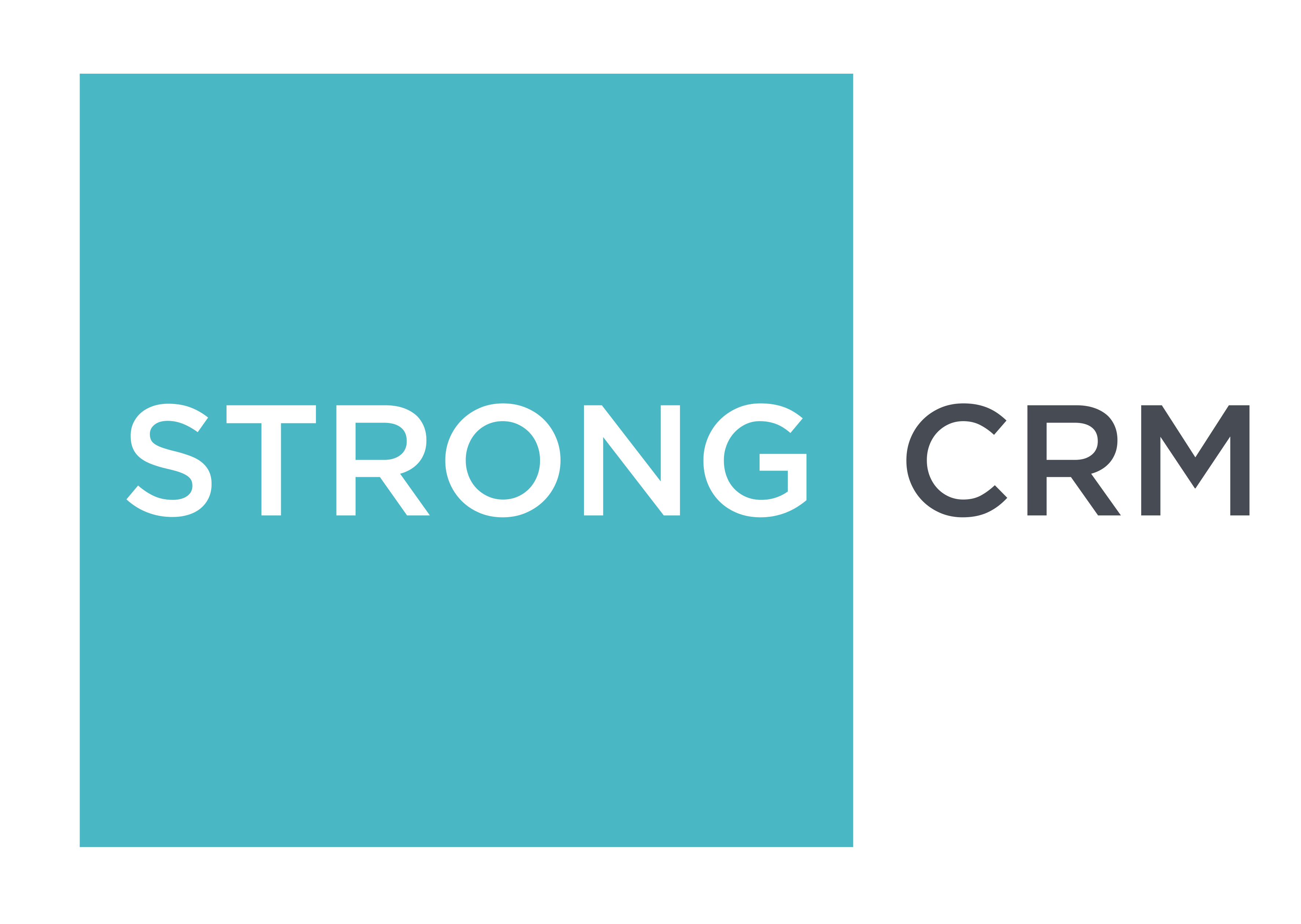Outbound Sales Tech Drives Results
Wondering how to utilize your outbound sales tech stack? If you take a gander at our Outbound Sales ROI Calculator you’ll notice the biggest difference maker in the whole calculator is one number – the call -> demo rate. Often even a 1% call -> demo rate is enough to make outbound sales teams highly profitable.
Because this position can be highly impactful at such small conversion rates, efficiency is key. If you can increase the outbound sales conversion rate to 1.25%, you’ve just increased your pipeline by 25%. And the best way to keep your team efficient is to have a top-tier tech stack that is extremely well-integrated and constantly maintained.
Here’s our guide for what you should have in your outbound sales tech stack.
The Sales Tech Essentials
The first two categories of outbound sales tech are essential to running an effective team. In fact, we assume that you have these two items in our overall outbound sales guide because they’re so important to the success of your team. They are:
- CRM
- Sales Productivity Tool
You have to have these two items to keep your reps efficient and track the right data for success.
CRM: Salesforce
Yes, of course. The absolute requirement. Salesforce is absolutely the essential choice for an essential need – the CRM. Everything else falls short, largely because you are unable to track to the minutia and customizability that you need to run an efficient SDR team.
While other systems like Hubspot have some built in tools for outbound sales teams, as soon as you need to scale up past 10-15 reps or need to customize anything it quickly falls short.
Sales Productivity: Outreach
I remember demoing Outreach when they were an itty bitty startup based in State College, PA. I thought it was the coolest thing, but we didn’t have the budget to go with them. Since then, I’ve tracked their rise and have actually purchased the software and implemented it in various teams.
Outreach basically created the Sales Productivity space and reps love it. They live inside Outreach instead of Salesforce, but it fully integrates with Salesforce so all the data can be reported inside a more flexible platform and you maintain your system of record.
There are a few reasons we recommend Outreach over Salesloft. While Salesloft does have a productivity platform, Salesloft has really not updated the platform very much in several years. In that time, Outreach has released several new features that are extremely helpful to reps. Outreach has also focused on their UX for reps and managers. And finally, their ability to focus on scale helps reps prioritize productivity.
The Optional Outbound No Brainer
If you have outbound sales tech and a team operating at scale, you need some sort of data source. I’ve tried a lot of them, including building my own outsourced team to go get specific lists of leads. However, for most businesses in the B2B space, utilizing a single data source that has done the work becomes pretty much a no brainer (after the initial shock of the cost).
Data Source: Zoominfo
When it comes to outbound teams, a lot of early-stage companies just shove a rep onto LinkedIn Premium and say “go prospect.” While Sales Navigator is great, the best way to list build is absolutely Zoominfo. They have done the work and built the systems to have the best B2B data.
Among the literally countless data providers (new ones pop up each day), Zoominfo continues to rise to the top and provide the best data and the best platform with its Salesforce Integrations. Just make sure you add on “Instant Enrich” and “Scheduled Enrich” at your purchase because those are the valuable salesforce integrations. Also, be careful with this integration – it’s extremely powerful, but also can quickly overwrite data that you wanted. There are ways to integrate the right way (if you want help – we’ve got you covered).
There are certain industries, like Education and Healthcare where Zoominfo doesn’t do as well as other more industry-specific data providers. However, as a general provider, it’s the best.
The Optional But ROI Positive
These outbound sales tech tools, while not required, will most likely be ROI positive for your team. This is where we can enable significantly more value through efficient scheduling and better intelligence.
Scheduling: Chili Piper
Back in the day, I had an idea for a SaaS app that was Chili Piper. I feel like the Winklevoss twins here claiming it was my idea, but I had a business plan and all. Oh well, I didn’t have the time or the resources to start the company and so Chilip Piper built it.
Their application does everything you need to get a meeting scheduled and ensure that it happens. While other solutions like Calendly do scheduling well, Chili Piper is optimized specifically for Sales Teams that want to schedule demos. This specificity really helps focus their product for this purpose – and that works extremely well with outbound sales teams.
Call Intelligence: Gong
If your team is doing 60 calls a day, there’s a lot of data right there. The problem is, it’s typically not captured. Emails should be captured by your Sales Productivity tool, but Gong will capture your phone calls, transcribe them, and report on them.
Yes, Salesloft and Outreach do have CI tools that you can purchase as a part of their applications. However, again due to the focus that Gong has specifically on CI, the features are more robust, the reporting is much better, and the insights are amazing.
The Optional But Advanced
Now we get to the significantly more advanced outbound sales tech. These require a significant understanding of data pipelines, structures, and even SQL, but as is with any tool like this, you get significantly more power by implementing.
Data Warehouse: BigQuery
If you’re spending significant time and dollars on an advanced outbound sales team, we get into the realm of needing highly advanced analytics and that’s where a Data Warehouse comes in. Once you’ve ingested data into your Data Warehouse with an ETL (more on that below), you will be able to get into the minutia of your data much easier.
The big problem with Data Warehouses is that it does require a pretty technical understanding of how databases work, and the benefit of them really comes if you know SQL quite well. As long as you’re able to write those queries, utilizing BigQuery will significantly enhance your productivity since you’ll be able to run advanced analytics on your data across various systems.
We like BigQuery here because of its flexibility and its ease of use for quick queries as well as its scalability for large projects. You can spin up a fully managed data warehouse in no time with BigQuery, just as long as you have the right ETL.
ETL: Stitch
An ETL (stands for Extract, Transform, Load) is an essential tool to get your data in and out of a Data Warehouse. Essentially ETLs integrate with all of the systems listed here (and then some) and pull in data to your Data Warehouse on a regular basis. They can then send data back down to each system based on your needs.
Stitch is our favorite because it’s exactly what you want – you essentially forget about it. Since an ETL sits in the middle of everything, you want it to just run without any questions, and that’s exactly what Stitch does. It’s also reasonable on the price and allows flexibility to increase the frequency of updates for more cost, or decrease if you need it.
Because most of what we’re doing with an ETL with outbound sales teams is reporting, Stitch works. If you need another ETL that does more data syncing between various systems, that would be another piece of software, which we’ll cover in a later post.
Reporting: Tableau
Ahh Tableau – the original BI tool. I remember Tableau’s humble beginnings here in Seattle’s Fremont neighborhood and its rapid rise (and then purchase by Salesforce). Because of its ubiquity, features, and flexibility, we always recommend using Tableau for BI.
The easy runner up is Looker Data, which was bought by Google a few years ago. While good, it doesn’t have the longevity of product features that Tableau does, so we still utilize Tableau. The (almost) free alternative, Google Data Studio (now Looker Data Studio, which is a separate product from Looker), is also quite good for simple analytics and BI, and costs a significant amount less than the two main alternatives – since it’s included in most Google For Work plans.
Questions?
Wondering about a tech solution not included here? Odds are we have worked with it in the past. Leave a comment with your question or contact our team to get answers!

